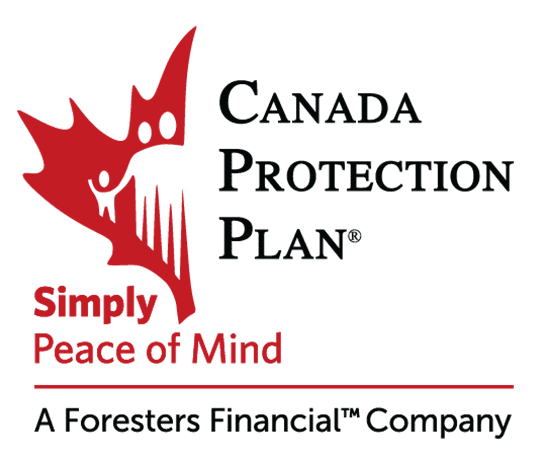
By Jason Kirby | MoneySense
RESPs are a powerful education savings tool for parents. Here’s why.
With the sleepless nights that come with a newborn it can be hard to plan even one week in the future, let alone grappling with how to save up enough money for when that little bundle of joy heads off to college or university in 18 years. Fortunately Canadian parents have a powerful savings tool at their disposal: the Registered Education Savings Plan (RESP)
Below we’ll take a look at some of the most common questions people have about RESPs to help you get started.
Here’s what you’ll learn:
What is an RESP?
A Registered Education Savings Plan is, like the name suggests, an investment account geared towards saving for a child’s education. Like its tax-shelter cousins the RRSP and TFSA, an RESP allows investments inside the account to grow tax free, meaning no taxes on capital gains and no income taxes on interest and dividend payments. The big benefit with RESPs, though, is that the government pays you to save by kicking in a grant of up to $7,200 over the life of the plan.
How does an RESP work?
The sponsor of the plan, usually the child’s parent or guardian, makes a contribution to the RESP. The government then ponies up 20% of that, up to a maximum contribution of $2,500 each year. That’s $500 in free money every year if you contribute the maximum. Known as the Canadian Education Savings Grant (CESG) this government money goes straight into the beneficiary’s RESP and is yours to invest as you please.
Lower- and middle-income families can benefit from additional grant amounts. If the child’s family income is below $45,916, the government will pay an additional 20% on the first $500 that’s contributed, for a total grant of 40%, while children in families above that income but below $91,831 get an extra 10%, for a total grant of 30%. The $7,200 lifetime grant limit still applies.
Don’t worry if you can’t contribute the full $2,500 a year to get the full government grant. Put in what you can. Any unused grant room is carried forward and can be used in future years. The only caveat is that in any one year the maximum grant that can be claimed is $1,000.
Here’s how the grants compare depending on family income and the amount being contributed:
RESP grants by income level
| Up to $45,916 | $45,916 to $91,831 | Above $91,831 | |
| Grant on first $500 contributed | $200 | $150 | $100 |
| Grant on remainder of annual contribution ($2,000) | $400 | $400 | $400 |
| Maximum yearly grant | $600 | $550 | $500 |
| Lifetime grant | $7200 | $7200 | $7200 |
Why should you open an RESP?
There are many reasons for opening an RESP for a child. Here are just 5:
1. Post-secondary educations are only getting more expensive. The average tuition for a four-year undergrad university program in Canada is now $27,300, and that doesn’t include accommodation and food, let alone other expenses. As part of the Maclean’suniversity guide, the magazine estimates the total annual cost of post-secondary education to be close to $20,000—or $80,000 over four years.
2. Free money! (see above). You could save for a child’s education with only your own TFSA, but you’d be missing out on the grants the government kicks into your child’s RESP.
3. The money you contribute and invest grows tax-free within an RESP.
4. When your child starts receiving payments from the RESP for school, the money will be taxed at their income, and since students are famously broke, their tax bill will be low.
5. RESPs have long lifespans. Just because your child might not want to go to school right away, don’t panic, you didn’t save for nothing. RESP accounts can remain open for 36 years, giving kids plenty of time to come around.
How do you open an RESP?
Simple. The easiest approach is to contact your bank, credit union, online broker, financial planner or robo-advisor and ask them to open a self-directed RESP account. You’ll need some documentation, like your social insurance number, your child’s SIN number and your child’s birth certificate.
Once the account is open, set up an automatic monthly withdrawal from your checking account to the RESP. To get the maximum grant, set the withdrawal at $208.33, but even $25 will start to add up.
There are lots of RESP providers out there, offering a wide range of services and fees. Some companies provided group or pooled RESP accounts. These often come with a lot of restrictions on how money is contributed and withdrawn, and the fees can be quite high. A self-directed RESP remains the lowest cost, simplest option.
To encourage more families to sign up for RESPs, in 2018 the Ontario government bolstered its infant registration system for new parents so that along with registering for things like a birth certificate and social insurance number, new parents can choose to be referred to an RESP provider. Other provinces are looking at similar programs.
What if you have more than one child?
If you have more than one child, you can open what’s known as an RESP family plan. They work like individual accounts, with the same contribution limits per child, but all the children can benefit in the savings and the costs of this type of plan are lower than opening multiple individual accounts. The only requirement is that each beneficiary be under the age of 21 and related by either blood or adoption.
Is there a contribution limit?
There’s no annual limit on how much you can put into a child’s RESP but there is a lifetime contribution limit of $50,000. So if you wanted you could put that full $50,000 into the RESP as soon as its opened and grow that investment tax-free. But if you do that, be aware that you’ll only get a CESG grant on the first $2,500 of that amount. You’d be leaving at least $6,700 in free government money on the table.
The lifetime contribution limit is also something to keep in mind if there are more than one RESP accounts opened for a child—for instance, if both the parents and grandparents open RESPs in the child’s name.
If you go over the $50,000 limit you’ll be penalized by the Canada Revenue Agency with a tax of 1% per month on the excess money until its withdrawn.
How do you get the RESP government grant?
RESP providers typically apply for the CESG grant automatically on your behalf. Many institutions notify the government of contributions only once a month, and it can take 6 to 8 weeks for the grant to be deposited in the RESP. However some RESP providers only apply for the grants once or twice a year. Make sure to ask your provider how often the grants will be deposited.
How should you invest an RESP?
RESPs can hold all the same investments as an RRSP or TFSA, such as cash, stocks, bonds, GICs, and mutual funds, not to mention foreign investments. But there are strategies to consider. In the child’s early years you might look at taking more risks with a higher share of the portfolio in equities. A low-cost mutual fund or ETF would help with that. Then as your child ages and gets closer to needing the money, lower the RESP’s exposure to equities. A laddered GIC is also worth looking at, especially now that rates are starting to rise. Above all, keep it simple.
How are RESPs taxed?
While the money you put in an RESP can grow tax-free, like in an RRSP or TFSA, there are important differences. For one, unlike an RRSP, you don’t receive a tax refund when you contribute to an RESP. In that way, they’re like TFSAs.
However, there is tax that has to be paid when money is withdrawn from an RESP, so in that regard, they’re like RRSPs.
Once your child starts in a post-secondary program there are two types of RESP withdrawals, and they are taxed differently.
The money you yourself contribute to an RESP can be withdrawn tax-free as Post-Secondary Education payments. On the other hand, the portion of the RESP that came from government grants, as well as any capital gains and investment income, is withdrawn as Educational Assistance Payments (EAPs) and is taxable as income. However, it’s taxed in your child’s hands. Since students have such low incomes, as well as access to tuition and education tax credits, they should pay little to no tax.
Here’s a tip: Because you can specify which type of withdrawal you want to make, draw down the EAP portion first. That way if your child doesn’t finish the program or there’s money left over, contributions will make up a larger portion of what’s left and can be taken out by you tax free.
What if your child doesn’t go to school?
It happens. If your child decides not to go to college or university, or pursue any of the other qualifying programs like apprenticeships or trade schools, you have options. If you have a family plan you can transfer the money to another child (though the $ 7,200-lifetime grant limit still applies).
You can withdraw your original contribution to the RESP tax-free, so if you maxed out your contributions, that’s $50,000 you can withdraw without penalty. All grant money must be returned to the government. Everything else in the RESP, the capital gains and income from dividends and interest, is returned to you as an Accumulated Income Payment (AIP). This payment is taxed in the year you receive it and is subject to an additional 20% penalty.
However, you can avoid this tax hit by transferring this amount, up to $50,000, to your RRSP. To do this, the child must be over the age of 21 and the RESP must have been open for at least 10 years. You also need to have room in your RRSP. If you don’t, you can delay withdrawing the AIP until room becomes available.
But don’t rush into any decisions. An RESP account can remain open for 36 years, giving your child plenty of time to eventually decide to pursue a post-secondary education.
What if there’s leftover money in an RESP?
Similar to the previous question, you can withdraw the unused amount or transfer it to an RRSP.
By Jason Kirby | MoneySense | Published on Mar 11, 2019
The information contained is as of date of publication and may be subject to change. These articles are intended as general information only.







